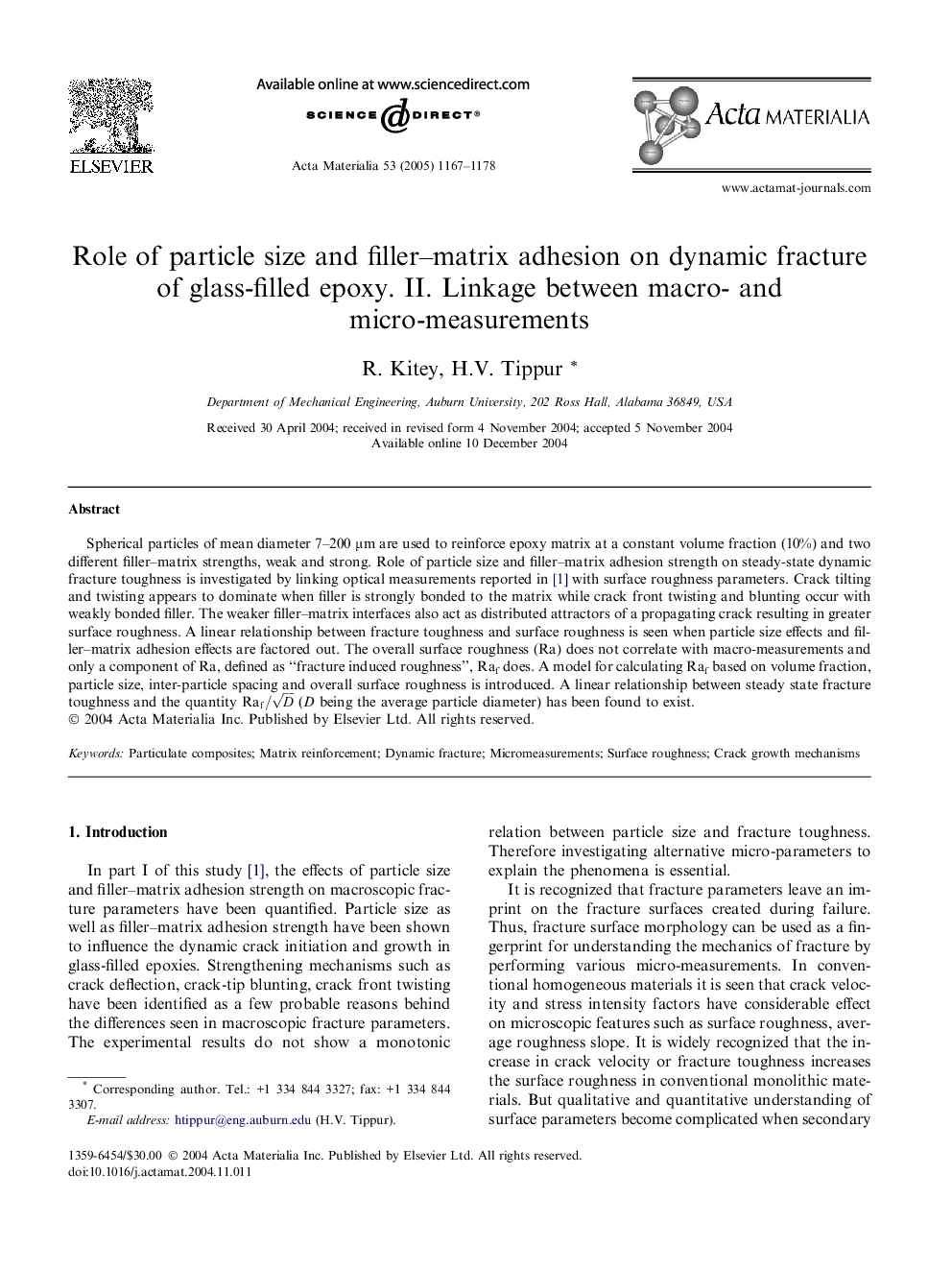| Article ID | Journal | Published Year | Pages | File Type |
|---|---|---|---|---|
| 10621157 | Acta Materialia | 2005 | 12 Pages |
Abstract
Spherical particles of mean diameter 7-200 μm are used to reinforce epoxy matrix at a constant volume fraction (10%) and two different filler-matrix strengths, weak and strong. Role of particle size and filler-matrix adhesion strength on steady-state dynamic fracture toughness is investigated by linking optical measurements reported in [1] with surface roughness parameters. Crack tilting and twisting appears to dominate when filler is strongly bonded to the matrix while crack front twisting and blunting occur with weakly bonded filler. The weaker filler-matrix interfaces also act as distributed attractors of a propagating crack resulting in greater surface roughness. A linear relationship between fracture toughness and surface roughness is seen when particle size effects and filler-matrix adhesion effects are factored out. The overall surface roughness (Ra) does not correlate with macro-measurements and only a component of Ra, defined as “fracture induced roughness”, Raf does. A model for calculating Raf based on volume fraction, particle size, inter-particle spacing and overall surface roughness is introduced. A linear relationship between steady state fracture toughness and the quantity Raf/D (D being the average particle diameter) has been found to exist.
Related Topics
Physical Sciences and Engineering
Materials Science
Ceramics and Composites
Authors
R. Kitey, H.V. Tippur,
